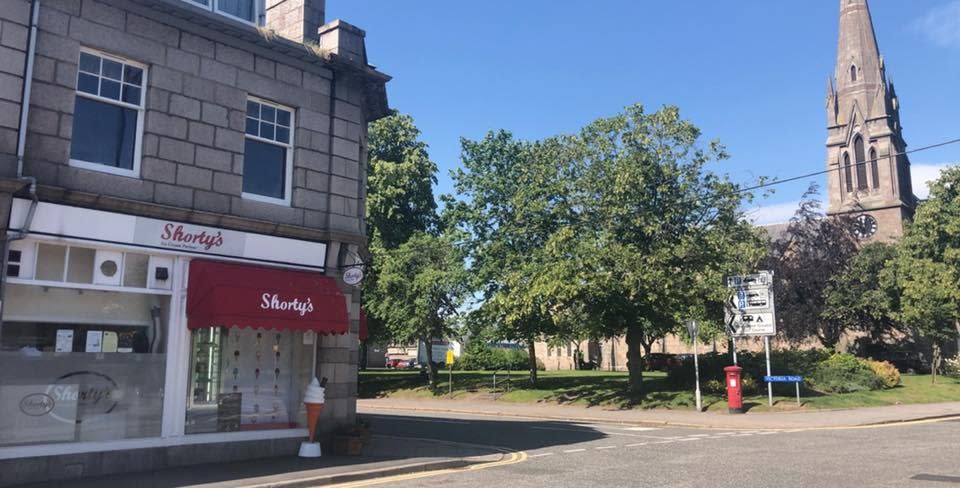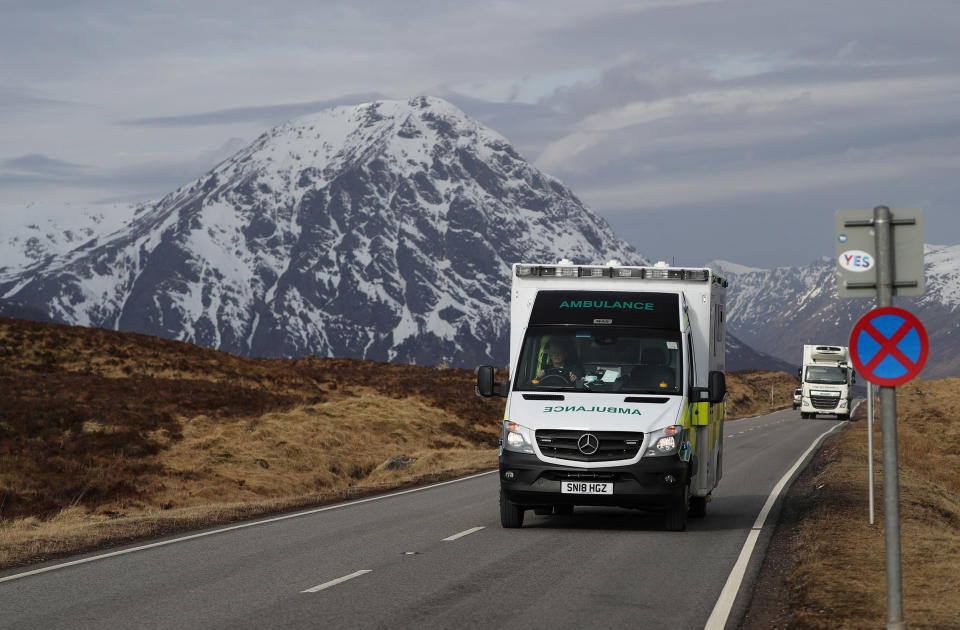Scottish city-dwellers fleeing virus told to go home
GLASGOW — In the Outer Hebrides, a remote island chain off the west coast of Scotland, there has yet to be a confirmed case of the coronavirus. But local leaders are worried.
An image shared by lawmaker Angus MacNeil paints a bleak picture of preparedness there: a primitive row of camp beds, each with a thin red blanket and blue pillow, sitting empty in a village hall. No ventilators, no testing kits.
MacNeil’s message, and that of officials across Scotland’s typically tourist-friendly Highlands and Islands region, is clear: Do not come.
But people have not been listening. Last weekend saw a spike in arrivals at northern Scotland’s world-renowned sites of natural beauty. Mountain trails were bustling, campsites full, and mobile-home parks at capacity.
Some were fleeing the boredom of self-isolation. Others seem to have been taking more permanent measures, traveling to secluded second homes or parking up motorhomes.
Scotland now has at least 600 confirmed COVID-19 cases and, like the rest of the U.K., is now in near-total lockdown. All but essential travel is prohibited, with strict daily limits on outdoor exercise. Those who have hunkered down in the countryside have been told to head home.
For many, that means returning to one of Scotland’s major cities, where infection numbers are higher. In Edinburgh, the capital, has more than 70 cases. Glasgow, the country’s largest city, has more than 180.
Leaving behind these densely populated areas, many in recent days have headed to Cairngorms National Park — a sprawling area of wilderness in the nation’s northeast that’s bigger than Rhode Island.
“This weekend [saw] an unprecedented surge in visitors ... in particular to beauty spots and communities, as people disregarded the government guidance on essential travel,” said Grant Moir, the park authority’s chief executive.
Outdoor exercise is as important as ever, he said, but only when conducted in accordance with government orders: within the vicinity of an individual's house and respecting social distancing rules. “Coming to the Highlands doesn’t make you isolated from COVID-19,” Moir said. “You can’t get away from this.”
It’s a sentiment shared by local inhabitants. In Ballater, a picturesque town on the park's eastern fringe, there are worries that scant supplies of food could become even scarcer if people who live elsewhere flood the area.
“We have limited resources in a small village like this,” said Cheryl Barr, who owns an ice cream parlor. “Not just us, in all small villages and small communities.”

Concerned for Ballater’s elderly and ill, Barr and a group of others have started delivering groceries and prescriptions to those unable to leave their homes. Dozens of volunteers have offered to help, Barr said, illustrating the “community spirit” that binds the town in times of hardship.
But in a pandemic, goodwill can only go so far. The nearest hospital — 11 miles away in Aboyne, a larger town — is for minor injuries only. To reach an intensive care unit, locals would have to drive an hour to Aberdeen, Scotland’s third-largest city.
“As a small village we’re not in the best position to be equipped for an outbreak like this, for the immediate people who live here let alone any outside characters contributing to that,” Barr added.
Her worries are echoed at the highest levels of Scotland’s government.
“Let me be crystal clear, people should not be traveling to rural and island communities full stop. They are endangering lives,” said lawmaker Fergus Ewing, who has responsibility for tourism and the rural economy.

“Panic-buying will have a devastating impact on the livelihoods of rural shops and potentially puts unwanted pressure on NHS services in our rural communities,” Ewing added, referring to the National Health Service.
Back in the Outer Hebrides, there is some welcome news. Ferries connecting islands to the mainland will run only for local residents and to carry nonresidents off the islands. Flights to-and-from Scotland’s major cities to the area’s tiny airstrips remain open, however.
Until all travel ceases, many people living in Scotland’s remote and rural communities — usually reliant on the lifeblood of tourism — will not feel safe.

